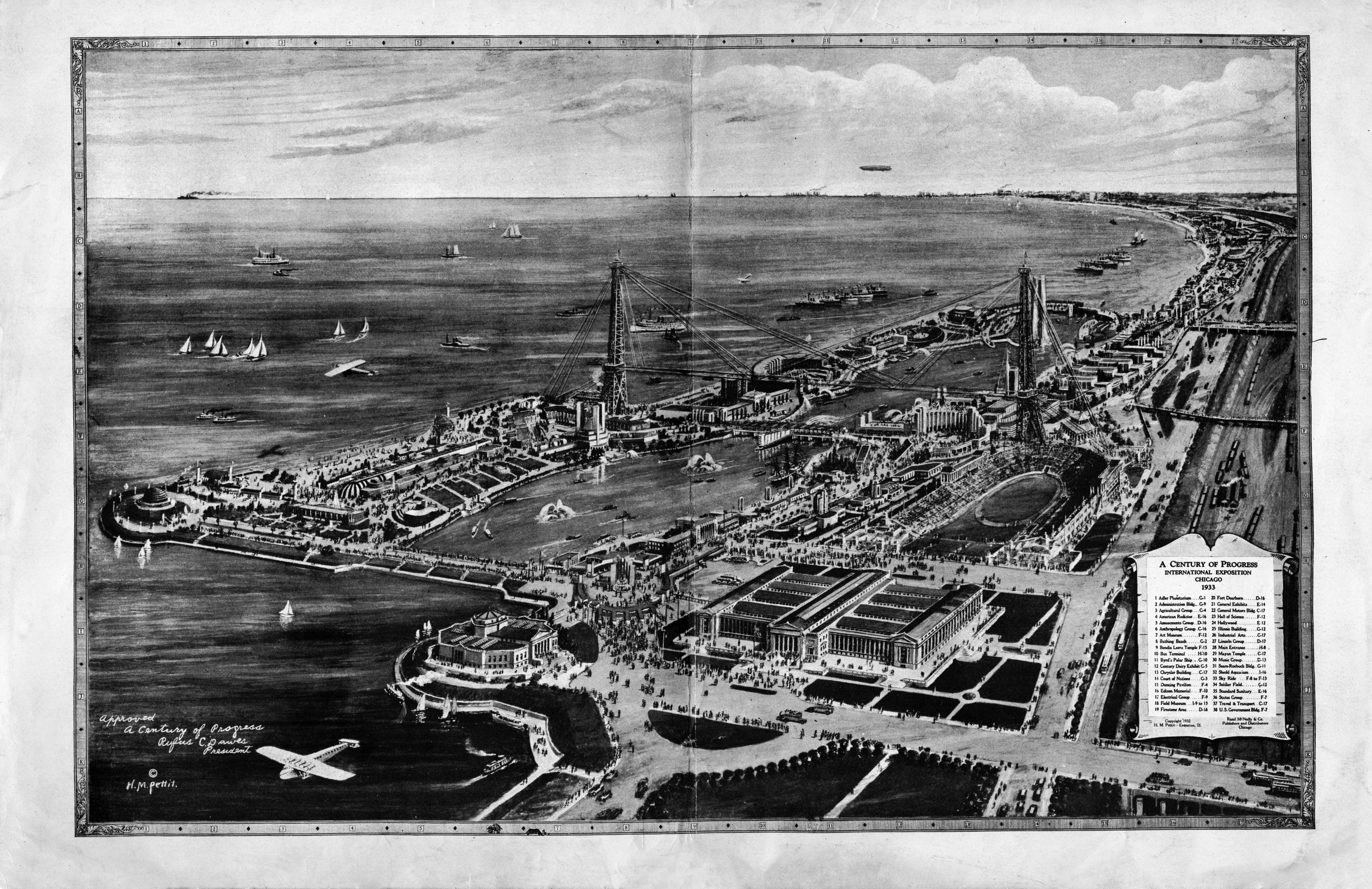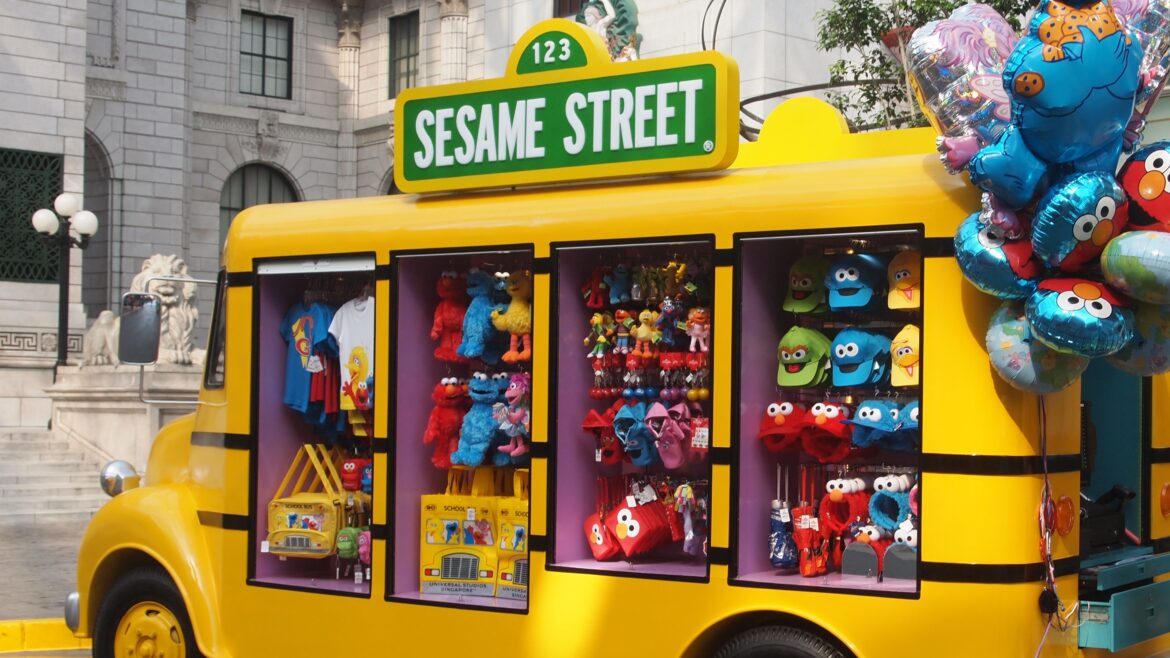Exploring The Century Of Progress: Chicago's 1933 World's Fair

Table of Contents
A Nation's Hope: The Context of the Century of Progress Exposition
The early 1930s were a time of profound hardship. The Great Depression had cast a long shadow over the United States, leaving millions unemployed and struggling to survive. Chicago, like many other cities, felt the devastating impact of this economic crisis. Against this backdrop, the Chicago World's Fair emerged as a bold initiative, a national undertaking designed to revitalize spirits and stimulate economic recovery. The fair served as a powerful symbol of hope, demonstrating that even in the face of adversity, progress was still possible.
- The devastating effects of the Great Depression: Widespread unemployment, bank failures, and widespread poverty created a climate of despair and uncertainty.
- The World's Fair as a national undertaking: The fair provided employment opportunities, boosting morale and injecting much-needed capital into the city.
- The role of government and private investment: Both federal and local governments, along with private corporations, contributed significantly to the financing and construction of the exposition.
Architectural Marvels and Art Deco Design: A Visual Spectacle
The architecture of the 1933 World's Fair was a breathtaking spectacle, a testament to the era's innovative spirit and aesthetic sensibilities. Art Deco design dominated the landscape, with its sleek lines, geometric patterns, and luxurious materials creating a futuristic yet elegant atmosphere. While many of the structures were temporary, built for the duration of the fair, their architectural legacy remains significant.
- Description of key buildings and their architects: The Hall of Science, the Travel and Transport Building, and the dazzling illumination of the fairgrounds are among the most memorable aspects of the fair's architectural achievement.
- The use of innovative materials like steel and reinforced concrete: These materials allowed for the construction of grand, sweeping structures that showcased both beauty and functionality.
- Examples of Art Deco design elements: Streamlined forms, stylized ornamentation, and the use of chrome and stainless steel epitomized the Art Deco style at the fair.
- The lasting impact on Chicago's cityscape: Although many buildings were demolished after the fair, the spirit of Art Deco design continues to inspire architects and urban planners.
Technological Wonders and Scientific Advancements at the Fair
The Century of Progress Exposition was a showcase of technological marvels, offering a glimpse into the future. Visitors were captivated by groundbreaking exhibits that showcased the rapid pace of scientific and technological innovation. The fair highlighted advancements that would shape the world in the decades to come.
- Examples of groundbreaking technology displayed at the fair: Early television technology, air conditioning, and advancements in electrical engineering were all prominently featured. General Electric's exhibits were particularly noteworthy.
- Discussion of the impact of these advancements on society: The fair's displays helped to popularize and promote these technologies, accelerating their adoption in everyday life.
- The role of the fair in promoting scientific literacy and innovation: The exposition emphasized the importance of science and technology in creating a better future.
The Electrifying Impact of Electricity at the Century of Progress
Electricity took center stage at the 1933 World's Fair. Dazzling light displays, powered by General Electric's impressive innovations, illuminated the fairgrounds, showcasing the transformative power of electricity in modern life. Exhibits highlighted the latest electrical technologies, from household appliances to industrial innovations, underlining electricity's crucial role in shaping the future. The spectacular "power and light" displays alone made a significant impact on visitors and solidified the perception of electricity as a driver of progress.
Cultural Impact and Legacy of the Century of Progress
Beyond the technological displays and architectural marvels, the 1933 Chicago World's Fair had a profound cultural impact. It served as a vibrant hub of entertainment, showcasing a wide range of cultural performances and social events. The fair's legacy extends far beyond its physical structures; it left an indelible mark on Chicago's cultural identity and its image as a dynamic center of innovation.
- Description of popular entertainment and cultural events at the fair: Music, theater, and other forms of entertainment attracted large crowds, providing a much-needed escape from the hardships of the Depression.
- The fair's impact on Chicago's cultural identity and tourism: The fair boosted Chicago's reputation as a major cultural and tourist destination, shaping its identity for decades to come.
- Long-term social and economic consequences of the World's Fair: The event played a key role in stimulating economic activity, improving morale, and shaping the city's future development.
Conclusion
The 1933 Chicago World's Fair, the Century of Progress Exposition, stands as a testament to human ingenuity and resilience. It offered a beacon of hope during the darkest days of the Great Depression, showcased revolutionary technological advancements, and left an enduring architectural and cultural legacy on Chicago and the nation. The fair's emphasis on innovation, its stunning Art Deco designs, and its forward-looking approach to technology continue to inspire and captivate audiences today. Dive deeper into the history of the Chicago World's Fair and uncover the enduring legacy of the Century of Progress Exposition! Explore our resources or plan your trip to Chicago to experience its impact firsthand.

Featured Posts
-
 Assessing The Blue Jays Trade Vlad Jr S Performance And Future
May 28, 2025
Assessing The Blue Jays Trade Vlad Jr S Performance And Future
May 28, 2025 -
 The Future Of Harvard Funding Trumps Trade School Focus
May 28, 2025
The Future Of Harvard Funding Trumps Trade School Focus
May 28, 2025 -
 Via Rail Facing Potential Strike Union Members Authorize Walkout
May 28, 2025
Via Rail Facing Potential Strike Union Members Authorize Walkout
May 28, 2025 -
 Antisipasi Hujan Petir Prakiraan Cuaca Jawa Timur 29 3
May 28, 2025
Antisipasi Hujan Petir Prakiraan Cuaca Jawa Timur 29 3
May 28, 2025 -
 Hailee Steinfeld Pregnancy Rumors Is She Expecting A Child With Josh Allen
May 28, 2025
Hailee Steinfeld Pregnancy Rumors Is She Expecting A Child With Josh Allen
May 28, 2025
